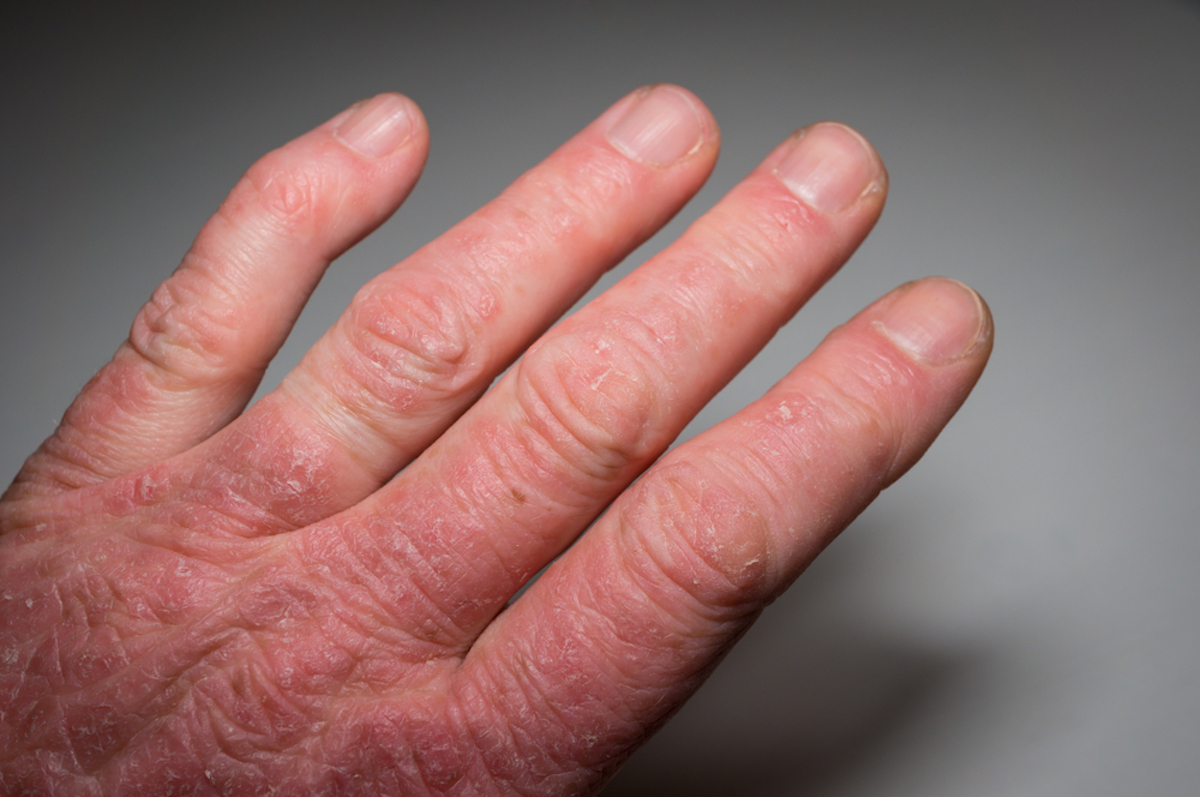We’ve all heard of arthritis, but have you ever heard of the condition called psoriatic arthritis, also known as PsA? This condition is a specific type of arthritis that affects almost 30% of people who have Psoriasis. Unfortunately, there is no cure for the condition, but that’s why it’s so important to understand it and know what kind of symptoms and treatments there are. Especially if you’ve Psoriasis!

What Is Psoriatic Arthritis
First, is it good to know what kind of condition psoriatic arthritis is and how it can present itself? Psoriatic arthritis is a form of inflammatory arthritis that is often circumscribed by joint pain, morning stiffness, and swelling in the joints. Both psoriatic arthritis and psoriasis are autoimmune diseases.
This means that in both conditions, certain cells attack other cells or tissue in the body and try to break them down. 1 in 3 Americans who suffer from Psoriasis also develops psoriatic arthritis. You may also get the condition if you don’t have Psoriasis yourself, but it runs in your family. So make sure you get checked regularly. In addition, it’s also very important to recognize the warning signs of the condition.
Symptoms Of PsA
Symptoms that manifest in the joint(s) – most commonly hands, feet, wrists, ankles & knees:
- Pain, aching or tenderness, and or swelling
- Stiffness
- Reduced range of motion
- Pain or stiffness in the lower back
- Tenderness, pain, or swelling where tendons & ligaments attach to the bone.
- Swelling of an entire finger or toe
Psoriatic arthritis has both visible and invisible symptoms, or in other words, symptoms manifest on the skin or in the joints. Symptoms that manifest on the skin – most commonly on the scalp, elbows, knees, and lower spine. So pay attention to the following things:

- Silverish or grayish scaly spots
- Papules – round, scaly, and raised spots – on the arms, legs, and torso
- Pitting of the nails
- Detaching or lifting finger- and/or toenails
Treatment Options for Psoriatic Arthritis
Other symptoms PsA patients talk about are; inflammation of the eye, fatigue, and anemia. Living with PsA can be quite difficult and painful, but if you get the right diagnosis and treatment plan, you can actually live a pretty comfortable life. That’s why it’s so important that, if you recognize the above symptoms, make an appointment with your healthcare provider quickly. Once the diagnosis has been made, he or she can draw up a treatment plan. Common treatment options for psoriatic arthritis are:
- Medication
- Exercise
- Heat and cold therapy
- Joint protection and energy conservation
- Splinting
- Surgery
The right treatment plan depends on how severe your symptoms are, and your overall health. Over time, you may need to change your treatment plan to continue to maintain control of the condition. Once again, there isn’t a cure for PsA, but it’s really important to diagnose it in the early stages and help prevent further joint involvement and damage. If left untreated, PsA can be disabling, causing chronic pain and even increasing the risk of heart diseases.

